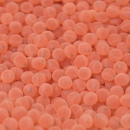About Us
Our History
Fish have been produced in the northern Sacramento Valley for over 100 years. It was on the McCloud River that the Baird Station, the first national fish hatchery, was established in 1872. The Battle Creek National Fish Cultural Station, located near the mouth of the river, was established in 1896. Until construction of Shasta and Keswick dams, Chinook salmon and steelhead trout migrated to the upper reaches of the Sacramento, Pit, and McCloud rivers to spawn.
The Coleman National Fish Hatchery was established in 1942 to mitigate the loss of natural salmon to historic spawning areas. Construction of the facility was authorized and established under the provisions of the Emergency Relief Appropriation Act of 1935 (49 Stat. 115) and the First Deficiency Appropriations Act, Fiscal Year 1936 (49 Stat. 1622). The Rivers and Harbors Act of 1937 (50 Stat. 844,850) re-authorized the CVP for construction by the Secretary of the Interior and subject to the Reclamation laws. Total cost for the hatchery and Keswick Fish Trap was $2,013,750.
Coleman NFH is located in Shasta County, California, on a relatively flat parcel of land on the north bank of Battle Creek approximately three miles east of the Sacramento River and twenty miles southeast of the city of Redding. Battle Creek provides surface water supply for the hatchery. The discharge of Battle Creek is regulated above the hatchery by four small power plants and several small reservoirs and diversions. To the north and south of the hatchery lie the rolling foothills of the Cascade Range with peaks ranging from 1,000 to 2,700 feet MSL.
Small valleys and sharp breaks in the land are produced by numerous seasonal streams draining the area. Battle Creek flows through a valley from the east to the west along the south edge of the hatchery property. Battle Creek enters the Sacramento river five river miles to the west of the hatchery.
Long term production goals for Coleman NFH Complex are as follows: 12,000,000 Fall Chinook Salmon, 1,000,000 Late Fall Chinook Salmon, 250,000 Winter Chinook Salmon, and 600,000 Steelhead Trout annually.



